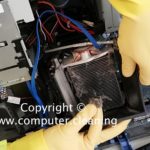Society has become concerned about issues of natural resources depletion and environmental degradation. Many industries have started using “clean technology” processes to provide “greener” products. Thus environmental effects or impacts of products and processes have become a key issue, that is why some companies are trying to find out methods to minimize their efforts on the environment. Many industries are actually using pollution prevention methods to check and improve their environmental performance.
Life Cycle Assessment (LCA) is actually a concept which considers the entire life cycle of a product. In other words, it is a “cradle to grave” approach for assessing industrial production systems. It actually involves all stages of the life cycle of the product e.g. raw material extraction, material transportation manufacturing product use and disposal of out of service product etc. The term “life cycle” refers to the major activities in the course of products lifespan from acquiring the raw material to its manufacture, use, maintenance and final disposal.
Life Cycle Assessment (LCA)
Life Cycle Assessment (LCA) is done in a systematic manner:
1. Aim or goal i.e. define or describe the product, process or activity.
2. Inventory analysis i.e. identify and quality energy, water, a material used and environmental releases (e.g. air emissions, solid waste disposal and wastewater discharge)
3. Impact assessment i.e. assesses the human and ecological effects of energy, water and material usage and the environmental releases identified in the inventory analysis.
4. Interpretation i.e. evaluate the results inventory analysis and impact assessment to select the preferred product or service.
Benefits of conducting LCA
• It helps the decision makers to select the product or process that results in the least impact to the environment.
• The LCA data identifies the transfer of environmental impacts from one media to another e.g. eliminating air emissions by the chemical washing of gaseous emissions and discarding the pollutants as liquid effluents.
• Human and ecological effects of material consumption and environmental releases to air, water and land in relation to each state of the life stage can be assessed.
Related Topics:
Methods for Reducing, Recycling, and Reuse of Wastes
Nuclear Hazards, Their Causes, Prevention and Control
Safe Disposal of Nuclear Wastes





